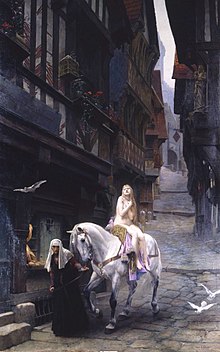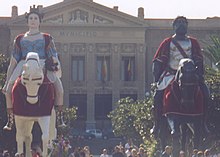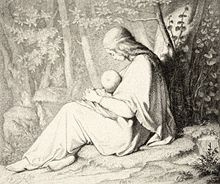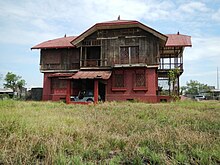
Urban legends is a genre of folklore concerning stories about an unusual or humorous event that many people believe to be true but largely are not.

A fairy tale is a short story that belongs to the folklore genre. Such stories typically feature magic, enchantments, and mythical or fanciful beings. In most cultures, there is no clear line separating myth from folk or fairy tale; all these together form the literature of preliterate societies. Fairy tales may be distinguished from other folk narratives such as legends and explicit moral tales, including beast fables. Prevalent elements include dragons, dwarfs, elves, fairies, giants, gnomes, goblins, griffins, merfolk, monsters, talking animals, trolls, unicorns, witches, wizards, magic, and enchantments.
Japanese folktales are an important cultural aspect of Japan. In commonplace usage, they signify a certain set of well-known classic tales, with a vague distinction of whether they fit the rigorous definition of "folktale" or not among various types of folklore. The admixed impostors are literate written pieces, dating back to the Muromachi period or even earlier times in the Middle Ages. These would not normally qualify for the English description "folktales".
Nordic folklore is the folklore of Denmark, Norway, Sweden, Iceland and the Faroe Islands. It has common roots with, and has been under mutual influence with, folklore in England, Germany, the Low Countries, the Baltic countries, Finland and Sápmi. Folklore is a concept encompassing expressive traditions of a particular culture or group. The peoples of Scandinavia are heterogenous, as are the oral genres and material culture that has been common in their lands. However, there are some commonalities across Scandinavian folkloric traditions, among them a common ground in elements from Norse mythology as well as Christian conceptions of the world.
Chinese folklore encompasses the folklore of China, and includes songs, poetry, dances, puppetry, and tales. It often tells stories of human nature, historical or legendary events, love, and the supernatural. The stories often explain natural phenomena and distinctive landmarks. Along with Chinese mythology, it forms an important element in Chinese folk religion.
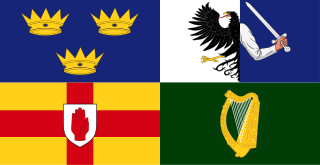
Irish folklore refers to the folktales, balladry, music, dance and mythology of Ireland. It is the study and appreciation of how people lived.

Richard Mercer Dorson was an American folklorist, professor, and director of the Folklore Institute at Indiana University. Dorson has been called the "father of American folklore" and "the dominant force in the study of folklore".
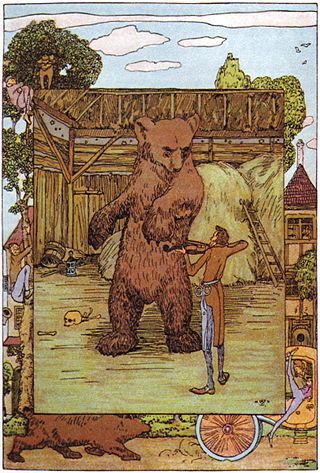
"The Clever Little Tailor" is a German fairy tale collected by the Brothers Grimm as tale 114. It is Aarne-Thompson type 850, The Princess's Birthmarks. Andrew Lang included it in The Green Fairy Book.

Folklore of Indonesia is known in Indonesian as dongeng, cerita rakyat or folklor, refer to any folklore found in Indonesia. Its origins are probably an oral culture, with a range of stories of heroes associated with wayang and other forms of theatre, transmitted outside of a written culture. Folklore in Indonesia are closely connected with mythology.
Traditional stories, or stories about traditions, differ from both fiction and nonfiction in that the importance of transmitting the story's worldview is generally understood to transcend an immediate need to establish its categorization as imaginary or factual. In the academic circles of literature, religion, history, and anthropology, categories of traditional story are important terminology to identify and interpret stories more precisely. Some stories belong in multiple categories and some stories do not fit into any category.
A legendary is a collection of saints' lives. The word derives from the Latin word legenda, meaning 'things to be read'. The first legendaries were manuscripts written in the Middle Ages, including collections such as the South English legendaries or the Golden Legend.

Bangladeshi Folk Literature constitutes a considerable portion of Bengali literature. Though it was created by illiterate communities and passed down orally from one generation to another it tends to flourish Bengali literature. Individual folk literature became a collective product and assumes the traditions, emotions, thoughts and values of the community.
Myth is a genre of folklore or theology consisting primarily of narratives that play a fundamental role in a society, such as foundational tales or origin myths. For folklorists, historians, philosophers or theologians this is very different from the use of "myth" simply indicating that something is not true. Instead, the truth value of a myth is not a defining criterion.

Danish folklore consists of folk tales, legends, songs, music, dancing, popular beliefs, myths and traditions communicated by the inhabitants of towns and villages across the country, often passed on from generation to generation by word of mouth. As in neighbouring countries, interest in folklore grew with an emerging feeling of national consciousness in 19th century Denmark. Researchers travelled across the country collecting innumerable folktales, songs and sayings while observing traditional dress in the various regions. Folklore today is part of the national heritage, represented in particular by national and local traditions, songs, folk dances and literature.
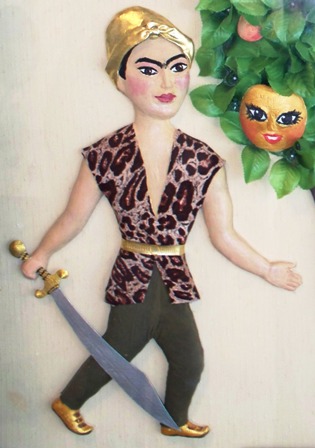
Azerbaijani fairy tales are works of folklore by the Azerbaijani people. They vary in context and subject and include tales from the heroic past of the Azerbaijani people and struggles with local and foreign oppressors. Spiritual, moral, social and philosophical views are reflected throughout these tales.
Fabula is a multilingual academic journal on comparative folklore studies with a focus on European narratives. It publishes essays, reviews, and conference reports in German, English, and French. Its subtitle is: Zeitschrift für Erzählforschung. Journal of Folktale Studies. Revue d'Etudes sur le Conte Populaire.
Afrikaans folklore is the body of traditional literature, music, dance and customs present in Afrikaans-speaking cultures.
Ancient Greek folklore consists of the folklore of the ancient Greeks. The topic includes genres such as mythology, legend, and folktales. According to classicist William Hansen: "the Greeks and Romans had all the genres of oral narrative known to us, even ghost stories and urban legends, but they also told all kinds that in most of the Western world no longer circulate orally, such as myths and fairytales."
Roman folklore is the folklore of ancient Rome, including genres such as myth, legend, joke, charms, fable, ghostlore, and numerous others. Scholars have published a variety of collections focused on the folklore of ancient Rome. Roman folklore is closely related to Ancient Greek folklore and precedes Italian folklore.
